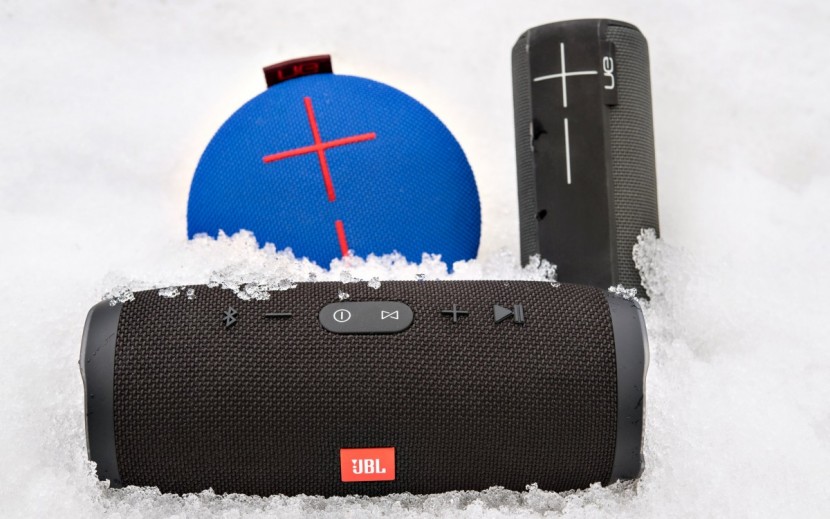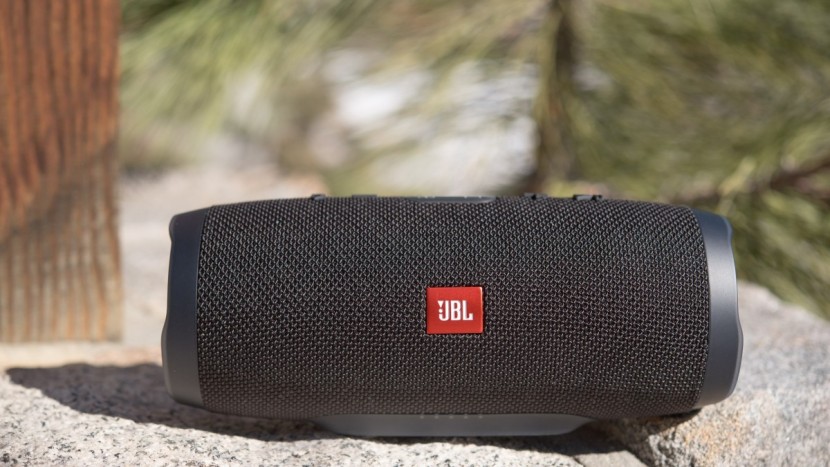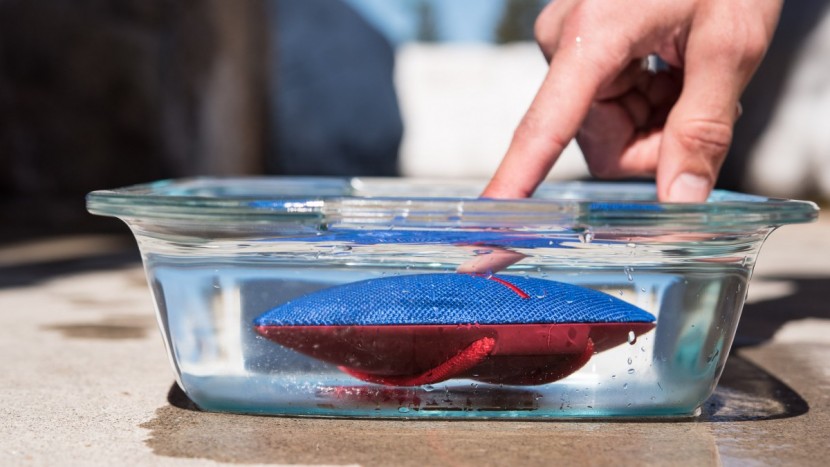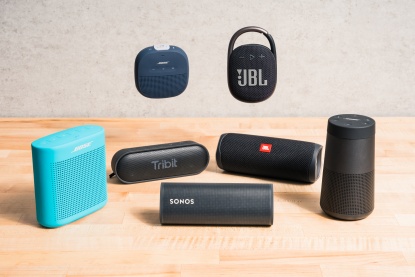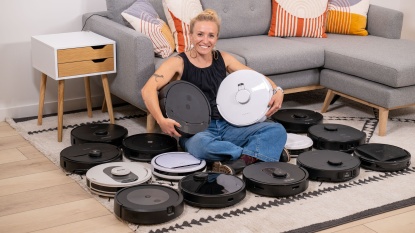Bluetooth technology, which creates short-range wireless networks over which electronic devices can quickly and efficiently share data, has become somewhat ubiquitous in recent years. So much so that adding the adjective 'Bluetooth' in front of a product name almost feels redundant, and certainly not descriptive.
Bluetooth Speakers: Defined by Portability
In the world of speakers adding the term 'Bluetooth' has largely become synonymous with 'portable' and, to some degree, 'ruggedized'. In this review we focus on battery-powered models that are small enough to be toted around. If you're looking for bigger wireless sound, many modern home theater and stereo sound systems will talk to your devices via a Bluetooth or WiFi connection.
Choosing the Right Bluetooth Speaker
Bluetooth technology has been one of the main heroes in the ongoing battle to free humanity from the tyranny of wires, and its application in portable, battery-powered speakers is our greatest hope in eradicating the tinny, shrill cacophonies that emanate from most smartphone speakers. Use our step-by-step guide to make sure you choose a speaker that is a mellifluous musician.
Step 1: Where do You Want to Use Your Speaker?
The environment in which you plan to use your speaker will dictate the general design you should be looking for. Bluetooth speaker design lies on a spectrum from not waterproof at all to being able to withstand complete submersion in water. If you probably aren't going to use your speaker outside at all and just want something portable enough to move from room to room as you ramble about the house, you can't beat the Bose SoundLink Mini II as it had the best sound quality in our testing. If you want to use your speaker outside in situations where it may be dropped or splashed with water you'll want something more rugged, ideally something with an IPX rating of at least 4 (more on that below).
Step 2: Are You Willing to Spend Extra for Better Sound Quality?
Once you've decided whether your Bluetooth speaker must be rugged or not, the next item on the list is sound quality. In our testing we've found that sound quality is a get-what-you-pay-for kind of scenario (sorry folks). So you'll have to decide if you want to shell out some extra cash to get deep bass and clear treble, or if you don't mind some clipping and loss of clarity as long as you can share your music without breaking the bank. Additionally, even the best portable Bluetooth speakers aren't going to match the sound quality of home sound systems, so audiophiles are going ot have to make sacrifices regardless.
Step 3: Consider Battery Life
In our testing we saw a wide range of battery lives amongst the models we tested. If you normally use your speaker for a few hours of lounging on the patio or next to the pool then battery life won't be much of an issue. If you want your speaker to power your friends through an all-night beach party, then you'll need to make sure it has a battery that is up to the task.
Step 4: Do You Need a Microphone?
Some Bluetooth speakers include a built-in microphone. Any model with a microphone will allow you to turn any phone call into a public conference call. We tested this feature on the models that offer it and found it to be of a similarly low quality across the board, low enough that we generally would have preferred to just use the speakerphone function on our phones, so we definitely wouldn't consider this a selling point.
Much more useful, some models with a microphone allow you to access voice command programs like Siri, Google Now, and Cortana directly from the speaker. That means you can tell the speaker, “Play Shake it Off,” even if your phone is buried in your backpack, and it will listen. If any of this functionality sounds appealing to you, you'll want to make sure the speaker you choose has a built-in microphone.
General Background Information
What is an IPX Rating?
IP or 'ingress protection' ratings describe how well an electronic device's external casing can keep out potentially damaging foreign material, namely dust and water. Most Bluetooth speakers that have an IP rating have one of the IPX variety. This refers to waterproofness, with the 'X' being a placeholder for where the dust rating would normally go, but we haven't come across a speaker that has an official rating for dust.
While there isn't a specific governing body that corroborates all IPX ratings, including such a rating on a product does have potential legal consequences, opening up a manufacturer to lawsuits if their product does not perform accordingly. Therefore you can rest assured that most manufacturers will only apply an IPX rating if they are confident their product can cut the mustard.
Let's dive into the specifics of the ratings, shall we?- IPX1-3: These ratings are almost worthless. They ensure protection from water under slightly ridiculous ideal situations that don't occur in the real world unless you live in a mystical realm where rain only ever falls in a perfectly vertical orientation and does not splash when it hits the ground.
- IPX4: This is the first rating that offers any practical water protection. IPX4 devices can withstand splashes of water from any direction. Cannonball away my friend, cannonball away (the Bose SoundLink Color II has an IPX4 rating).
- IPX5: Devices can withstand not only splashes but pressurized streams of water. Sure, it's unlikely that you'll be squirting your speaker with a turkey baster, but it does provide extra peace of mind (the Anker SoundCore 2 has an IPX5 rating).
- IPX6: Devices can withstand even high pressured streams of water, so now you can squirt your speaker with a giant turkey baster.
- IPX7: This is truly waterproof. IPX7 devices can be fully submerged in up to one meter of water for 30 minutes. This is the rating you'll want if you regularly take your speaker on boats or in the shower (the UE Boom 2, the UE Roll 2, and the JBL Charge 3 all have IPX7 ratings).
How Good do These Speakers Actually Sound?
The answer to this question largely depends on you. If you've never felt the need to upgrade from the white earbuds that came with your iPhone, then you'll probably be impressed with how most of these speakers sound. However, if you placed the furniture in your living room based on the acoustic sweet spot of your stereo system, then even the best portable Bluetooth speaker will sound decidedly lackluster. In our testing the Bose SoundLink Mini II blew many people away with its richness and clarity, while one of the audiophiles amongst us quipped, “In the grand scheme of things all of these are pretty crappy speakers.”
The lesson to be learned here is to not expect audio nirvana from these speakers. They will never match the audio quality of soundbars and speaker systems that you would have in a standard home audio system. However, they allow you and some friends to share music in beautiful locations, which can make up for any shortcomings in sound quality. In our testing most of the speakers were able to barely fill the testing apartment with sound and it wasn't too hard to drown the music out when standing far from the speaker. Nevertheless, they were still plenty loud enough for a group of friends hanging out.

